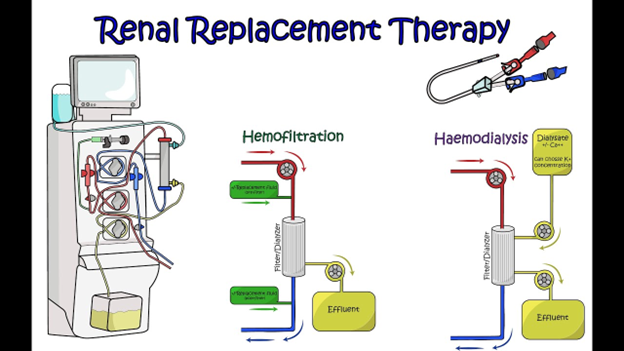Understanding renal replacement therapy (RRT) is vital for anyone battling renal kidney disease treatment. Key for maintaining health while managing kidney problems, RRT’s significance cannot be understated. This blog aims to break down the complexities surrounding RRT, offering clear insights into its importance. We will explore how kidneys work, what happens when they fail, and how RRT serves as a lifeline. Prepare to learn about the different renal kidney disease treatment options, their roles, and how they enhance patient life.
Demystifying Kidney Function and Failure
Our kidneys do a lot more than we often realize. They filter waste, balance fluids, and regulate blood pressure. But when they don’t work well, waste builds up in the body, causing health issues. This is what we call kidney disease, which leads to kidney failure if untreated. When this happens, patients need an effective renal kidney disease treatment to stay healthy. Understanding these basics helps in grasping why RRT becomes essential for many.
Explaining Renal Replacement Therapy (RRT)
RRT is a treatment that takes over some of the kidney’s functions when it stops working. It becomes necessary when kidney damage is severe. RRT assists in removing waste and balancing body fluids, serving as a critical component of renal kidney disease treatment. It’s a supportive approach, helping patients manage symptoms and improve life quality. This helps patients lead more fulfilling lives despite their kidney problems.
Types of Renal Replacement Therapy Options
There are several RRT options:
- Hemodialysis: This removes waste from the blood using a machine.
- Peritoneal Dialysis: Uses a fluid in the abdomen to clean the blood.
- Hemofiltration and Hemodiafiltration: These are more advanced procedures that filter blood.
- Kidney Transplantation: A new kidney is placed into the patient’s body.
Here’s a simple table to see how these methods compare:
| Type | Procedure | Frequency
|————————-|———————————————-|——————————– | Hemodialysis | Machine filters blood externally | 3 times a week
| Peritoneal Dialysis | Fluid in belly cleans blood | Daily
| Hemofiltration | Continuous blood filtration | Several times during the day
| Kidney Transplantation | New kidney replacement | Once (with follow-up care)
Choosing the right option depends on individual health needs and lifestyle.
Importance of Renal Replacement Therapy
RRT’s role is crucial in renal kidney disease treatment. It prevents harmful buildup of toxins in the body. By managing fluid and electrolyte levels, it helps patients feel better and function more normally. Most importantly, RRT can greatly improve a person’s quality of life. They can enjoy daily activities and feel more energized. Regular RRT can also extend life expectancy, giving patients and their families hope and more precious time together.
Guidance on Choosing the Right Therapy
Picking the right therapy is a joint decision. Factors include the patient’s health, lifestyle, and personal preferences. Family should be involved in discussions with healthcare teams. Setting clear expectations helps in adapting to the chosen method. This ensures that the renal kidney disease treatment fits well into their daily life, providing a balance between treatment and simple everyday pleasures.
Preparing for and Managing Life on Dialysis
Getting ready for dialysis involves practical and emotional preparation. Patients should make small lifestyle adjustments, like planning their daily routine around treatment times. For Indian patients, it often means adjusting to a special diet that supports kidney health. This might look like:
- Reducing salt and potassium
- Choosing fresh foods over processed ones
- Meeting nutritional needs with the help of a dietitian
Patient stories highlight personal journeys of adapting and gaining renewed gratitude for life’s moments.
Technological Advancements in Renal Therapy
The tech field is buzzing with new developments in RRT. Future advancements promise better and easier procedures. Innovations aim to enhance patient care by making treatments less invasive and more effective. These advancements will be pivotal in shaping the future of renal kidney disease treatment, offering hope for improved outcomes and better quality of life for patients.
Economic Considerations and Support for Indian Patients
RRT can be financially challenging. Many patients face high costs for their renal kidney disease treatment. Thankfully, there are resources available in India. Patients can turn to government and private aid programs. These aids can help ease financial stress, ensuring that those in need have access to essential treatments without the heavy burden of costs.
Conclusion: Living Hopeful with RRT
Though kidney disease can seem daunting, there is hope. Seeking guidance from healthcare experts is crucial. With the right renal kidney disease treatment and support, patients can lead fulfilling lives. The journey may be tough, but RRT provides a path to living well, giving patients and families a chance to embrace life’s special moments with hope and courage.

